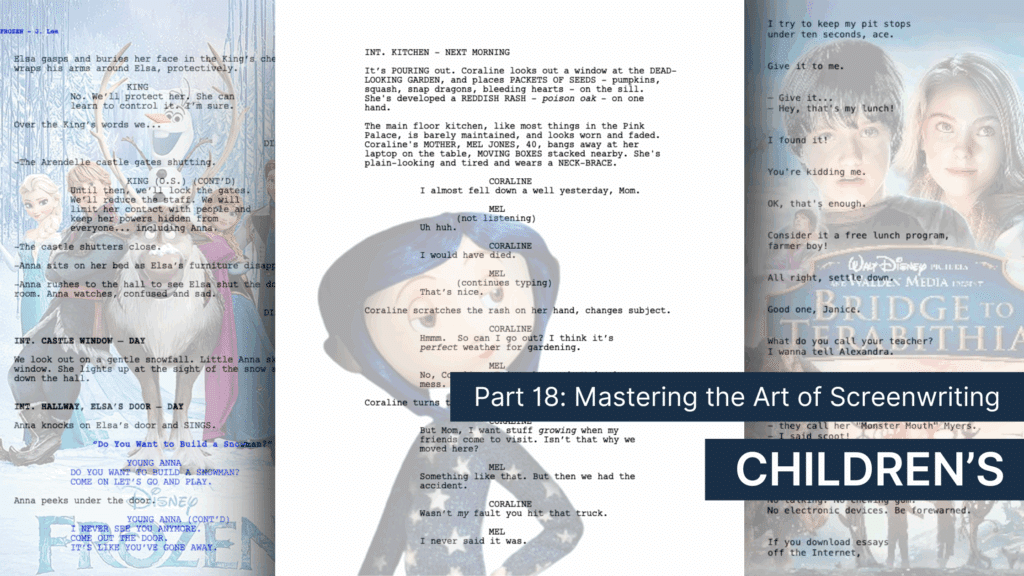
Welcome to yet another installment in our series, Masting the Art of Screenwriting. Yes, we’re back and it’s time to venture into the world of children’s storytelling. So, buckle up!
Children’s movies are a storytelling playground. A place where imaginations can run wild, emotions are worn on sleeves, and life’s biggest lessons are tucked inside tiny moments. Like a toy learning he’s loved or a snow queen discovering the power of sisterhood.
But writing a script for a children’s movie isn’t just about cute characters and catchy songs. It’s about understanding your audience, building stories that resonate across age groups, and creating characters that feel like friends.
So, if you’re dreaming up your first animated adventure or refining a live-action family drama, then you’ve come to the right place. In today’s blog, we’ll be exploring what you’ll need to write your first children’s movie.
Let’s dive in.
Table of Contents
- What Makes Children’s Movies Unique
- Understanding Age-Appropriate Storytelling
- Story Beats for Children’s Films
- Building Memorable Characters
- Examples of Children’s Film Scripts
- Write with Celtx: Using Character Profiles and Beat Sheets
- FAQs
- Conclusion
What Makes Children’s Movies Unique
Hint: It’s not all about the talking animals!
Children’s films are deceptively simple. They’re often bright, funny, and fast-paced, but underneath the surface, they’re doing a lot of emotional heavy lifting. It’s these stories that help kids make sense of the world, and they often do it with more honesty and nuance than adult dramas.
Here’s what sets them apart:
1. Big Emotions, Small Worlds
Kids feel deeply, and children’s movies tend to reflect that. The language is accessible, but the emotional stakes are sky-high.
2. Visual Storytelling
Think less exposition, more action. Show, don’t tell, especially when your audience is still learning to read between the lines. Visual storytelling is everything.
3. Moral Clarity
…with a twist! Good vs. evil is a classic setup, but the best children’s films explore empathy, forgiveness, and complexity.
4. Multi-Generational Humor
The best jokes in children’s movies land for both kids and adults. (Looking at you, Shrek!)

Children’s movies are often also rewatched dozens of times. That means your script needs to hold up to repeat viewings, and ideally, reveal new layers each time.
Understanding Age-Appropriate Storytelling
One size definitely doesn’t fit all when it comes to writing for children. It’s a bit like saying you’re writing for ‘humans’; it’s a broad category. A four-year-old and a twelve-year-old live in completely different cognitive and emotional worlds.
So, before you start writing, you need to ask yourself this: Who am I talking to?
Ages 3-6
At this age, you’ll be looking at themes such as friendship, sharing, safety and exploration using a simple, linear structure. Repetition will be your best friend here with your characters having clear roles in the story: hero, helper, villain etc.
When writing dialogue, stick to short, rhythmic lines that are easy to follow.
Ages 7-10
Much of the themes from the 3-6 age group will crossover, morphing into belonging, bravery, fairness and curiosity. This time your themes may become more complex with some emotional twists along the way. Your characters can be flawed but lovable, expressing themselves in witty, emotionally rich ways.
Ages 11-13
Identity, independence, peer pressure, and self-discovery will take the front seat as this age group move towards their teenage years. Your narratives will be multi-layered with subplots. Characters will be realistic and emotionally complex as they deal with internal conflict. Also make sure to pepper your dialogue with sarcasm, slang and deeper emotional beats to really engage your audience.
Remember, knowing your audience helps you shape everything from pacing to tone to the kinds of jokes that will actually land.
Story Beats for Children’s Films
Children’s movies often follow a classic three-act structure, but the pacing is tighter, the stakes are clearer, and the emotional beats are front and center. Let’s break down two beloved examples.
Toy Story (1995)
- Act I: Woody’s world is rocked when Buzz Lightyear arrives
- Act II: Woody and Buzz get lost and must team up to get home
- Act III: They return, changed and bonded
The key beats include:
- Inciting incident: Buzz arrives
- Midpoint: Woody and Buzz are stranded
- Climax: They chase the moving van
- Resolution: Woody accepts Buzz as a friend
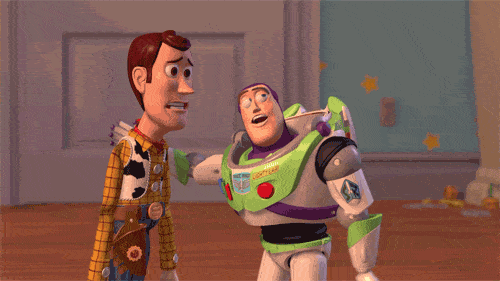
Frozen (2013)
- Act I: Elsa hides her powers, Anna dreams of connection
- Act II: Elsa flees, Anna embarks on a journey to find her
- Act III: Anna sacrifices herself, and love saves the day
The key beats include:
- Inciting incident: Elsa’s powers are revealed
- Midpoint: Anna meets Kristoff and Olaf
- Climax: Anna freezes
- Resolution: Love thaws the ice
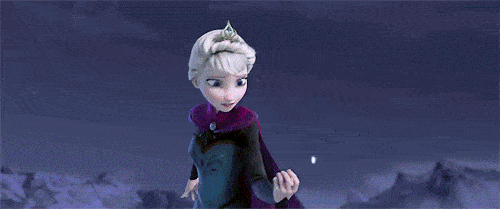
Bridge to Terabithia (2007)
- Act I: Jess meets Leslie, and they create the magical world of Terabithia
- Act II: Their friendship deepens as they escape into their fantasy world
- Act III: Jess copes with Leslie’s sudden death and finds strength in her memory
The key beats include:
- Inciting Incident: Jess and Leslie bond over their shared creativity
- Midpoint: They face real-world challenges and deepen their emotional connection
- Climax: Jess learns of Leslie’s death
- Resolution: Jess honors Leslie by sharing Terabithia with his sister
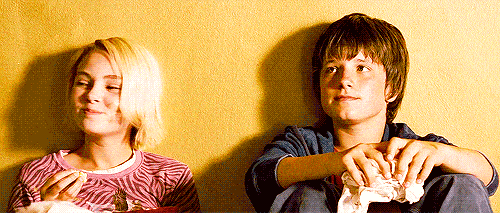
The Lego Movie (2014)
- Act I: Emmet is an ordinary guy who stumbles into a prophecy
- Act II: He trains to become a Master Builder but struggles with self-doubt
- Act III: Emmet defeats President Business
The key beats include:
- Inciting Incident: Emmet finds the Piece of Resistance and meets Wyldestyle
- Midpoint: The team is captured, and Emmet sacrifices himself
- Climax: Emmet realizes he doesn’t need to be special to make a difference
- Resolution: The real-world father-son conflict is resolved, and creativity is embraced.
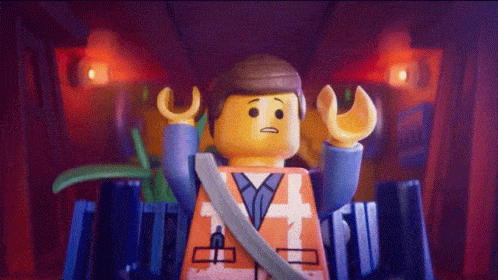
These films are emotionally rich, visually dynamic, and paced to keep kids engaged while still tugging at adult heartstrings.
Building Memorable Characters
As we’ve seen, characters are at the heart of any children’s movie. They’re who kids dress up as, quote endlessly, and carry with them into adulthood.
Okay, that’s great, but how do you actually create characters that stick?
1. Give Them a Clear Want and Need
What do they want? (e.g. fame, freedom)
What do they need? (e.g. love, self-acceptance)
A want is what your character desires on the outside. For example, the end goal for the quest they’re about to embark upon. Conversely, a need is what the change that occurs internally, usually in parallel to their want.
2. Make Them Visually Distinct
Think bright colors, unique shapes and expressive faces. These help kids instantly recognize and remember your characters.
3. Use Exaggerated Traits
Make your characters stand out! Disney does this extremely well; take traits like Dory’s forgetfulness or Olaf’s love of summer. It’s these quirks that make characters fun and relatable, especially for children.
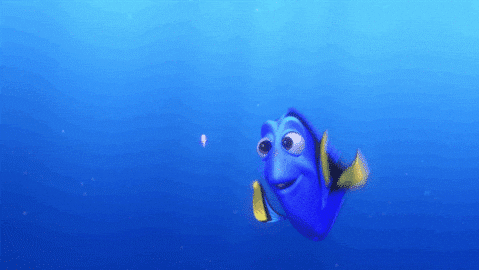
4. Let Them Grow
Kids love watching characters change, just like adults. So, make sure they have a growth arc!
5. Include Sidekicks
Sidekicks are great sources of comic relief, emotional support, or just someone for the protagonist to bounce dialogue off. You’ll often find the sidekick steals the show!
Examples of Children’s Film Scripts
Reading scripts is one of the best ways to learn what works (and, quite frankly, what doesn’t!). Here are a few gems you need to explore before putting pen to paper on your own script.
Kubo and the Two Strings (2016)
Written by Marc Haimes and Chris Butler, this visually stunning stop-motion adventure blends Japanese folklore with universal themes of memory and loss.
The script has a strong storytelling focus as both a literal and metaphorical device throughout the plot. It’s a great example of how to tackle serious themes like grief and identity in a way that’s accessible to children.
Check out the script here.
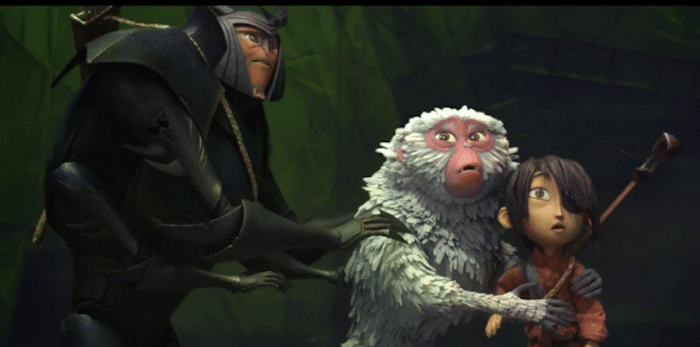
The Mitchells vs. the Machines (2021)
Mike Rianda and Jeff Rowe’s animated comedy script is a masterclass in balancing chaos with heart. The script is packed with fast-paced humor, internet culture references, and deeply relatable family dynamic.
If you’re wanting to write for older kids and tweens while keeping the emotional thread of your story intact, this is a great one to read – right here.

Coraline (2009)
A darker, more gothic children’s film that explores themes of neglect, bravery and self-reliance. Henry Selick’s script is atmospheric and eerie, showing how you can push genre boundaries while still writing for a younger audience.
This script is especially useful if you’re a writer interested in horror or fantasy for kids.

A Monster Calls (2016)
Patrick Ness’s emotionally powerful script blends fantasy with real-world grief in a way that’s deeply affecting for older children and tweens. The story follows a boy coping with his mother’s terminal illness, guided by a tree monster who tells his allegorical stories.
It’s a brilliant choice if you want to study how to use metaphor and magical realism to explore difficult emotions. Check it out here.

And for even more examples of stand-out children’s scripts, check out the BBC’s comprehensive list of scripts right here.
Write with Celtx: Using Character Profiles and Beat Sheets
If you’re writing your children’s movie in Celtx (and we highly recommend you do!), two tools will become your very own creative sidekicks: character profiles and beat sheets.
Character Profiles
These help you build characters from the inside out. You can define:
- Personality traits
- Motivations
- Relationships
- Visual descriptions
- Backstory
This is especially useful for children’s films, where characters need to be vivid, emotionally engaging, and instantly recognizable.

So how do you create a character profile using Celtx? Check out our full guide here.
Beat Sheets
Our Beat Sheets help you map out your story’s structure visually. Using our intuitive drag-and-drop feature, you can:
- Define major plot points
- Track emotional arcs
- Ensure pacing works for your target age group
- Align character development with story progression

For more on Celtx’s beat sheets, click here.
FAQs
Yes. Animation allows for more visual exaggeration and fantastical elements. Live action often leans more into realism and subtlety.
Typically, 80-100 pages. Shorter for younger audiences, longer for tweens.
Absolutely. Just handle them with care. Kids are smart and emotionally intuitive; they can handle depth if it’s presented with hope.
Not necessarily, but it doesn’t hurt to think visually. Memorable characters and strong visuals often lead to merchandising opportunities.
Read it aloud. Share it with kids in your target age group and watch their reactions. If they laugh, ask questions, or stay glued, then you’re definitely onto something.
Conclusion
Writing a children’s movie is a chance to create something timeless. It’s not just about entertaining but about helping kids feel seen, understood, and inspired. With the right structure, characters, and emotional beats, your story can become a cherished part of someone’s growing-up years.
And with Celtx, you’ve got the tools to make it happen. From Character Profiles to Beat Sheets, you can build your story with clarity and creativity.
Start writing your children’s movie script in Celtx today — free to sign up.
Catch up with the rest of the series:
- Horror: From Dreams to Screams
- Horror: How to Write a Horror Script Part 2
- Science Fiction: Beyond the Stars
- Comedy: Timing, Characters, and Chaos
- Drama: Human Stories, High Stakes
- Rom-Com: From Meet-Cutes to Happy Endings
- Holiday: Crafting Seasonal Magic
- Documentary: Research and Reality
- Skit: Writing Punchlines that Land
- Romance: How to Sweep Audiences Off Their Feet
- Mystery: Leaving Breadcrumbs Without Losing the Plot
- Musical: Writing Rhythm & Emotion
- Action: Writing Momentum on the Page
- Fantasy: Legacy and Lore
- Period: Pieces with a Punch – Writing a Historical Script
- Adventure: From Quests to Climax
